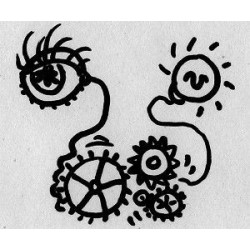



Autonomous Boards
=
Interactivity without computers
These are modules that do not require a computer to operate. Their behavior is programmable and/or automated.
The benefits of having an electronic board to manage a mechanical installation include:
ZIP or Z Interpreter of Patch: This is an input/output board that can function either with a computer or independently using Max patches directly downloaded into the board. It allows for the management of sensors, actuators, and communication via MIDI with other boards for sensors or actuators.
Its uses are varied: it can be part of semi- or fully autonomous installations, for example, to autonomously manage sensor/actuator interactions while receiving general instructions from another decision-making center, or even completely replace the computer.
Mémoriz: This allows you to record an animation sequence using a simple sensor (switch, potentiometer, etc.) to control an actuator (light, motor, etc.) in intensity or on/off.
Lumière Board: It turns on a light (or a DC motor) with a fade-in when the sensor detects someone. It then fades out with a fade-out. The fade durations are adjustable, as well as the trigger threshold based on the sensor.
Déclicator: In response to a binary sensor, this small module triggers the closure of a Reed relay. It allows for the control of switches or low-power devices in response to a sensor's signal.
Il n'y a pas d'autres documents disponibles ici pour le moment.
You might also like